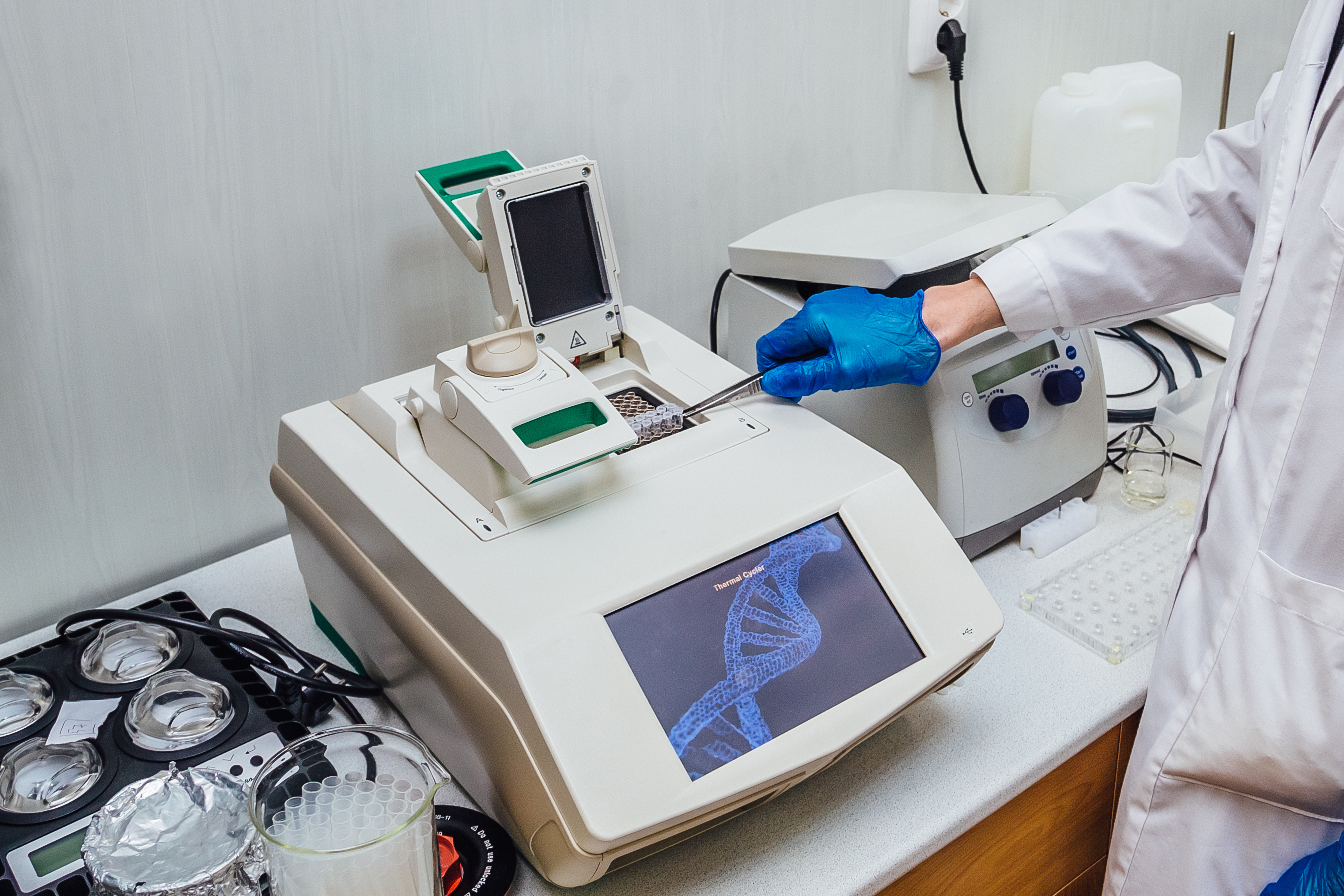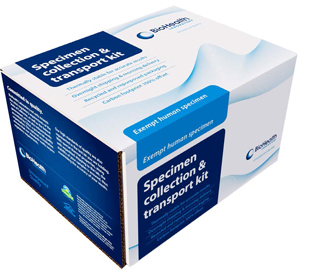With our growing understanding of the microbiome, gut health has taken center stage as a major mediator of health and disease. Disturbances in the microbiome, particularly gut infections, are being linked to many diseases and chronic health issues.
Recently there’s been an explosion of internet-based information and websites focusing on treating gut imbalances and pathogens.
With websites filled with lengthy lists of symptoms, it can be easy (and tempting) to self-diagnose yourself with candida, SIBO, parasites and/or other microbial issues.
Self-treating suspected gut infections or overgrowths without testing first is appealing. Many practitioners and websites have step-by-step protocols ready for you to start right away.
And some of these sites even suggest it’s perfectly safe to self-treat without any supervision by a healthcare provider.
You might be wondering: why would you spend hundreds of dollars on gut testing when you’re confident you have all the textbook symptoms of a gut infection?
While gut testing isn’t cheap, the importance of gut testing to properly identify and appropriately treat gut infections can’t be ignored. Using reliable gut testing is an important step for anyone looking to start an effective gut treatment protocol.
Gut testing is even beneficial for people who are dealing with lingering health issues that have not been solved by conventional treatment. This includes issues like autoimmune disease, skin conditions, or hormonal imbalances.
Evidence-based gut tests are a great tool for learning more about your body’s functioning, and crafting a plan for getting your health optimized. This especially goes for those of you with clear gut health symptoms like constipation, diarrhea, bloating, and gas.
In this post, you’ll learn why treating the gut without testing is not the best strategy for improving your health. You’ll also learn why guessing can be harmful in some cases.
I’ll also share the specific types of gut tests I recommend to my clients to help them identify the true root cause of their symptoms.
Keep reading to learn why you should get gut testing done, and not just rely on educated guessing!

4 reasons to test for gut infections first
1. You could treat the wrong issue
Many of the symptoms listed for different gut issues are non-specific. There’s no way to know for sure what your exact issue is simply by looking at a list of common symptoms on the internet.
Gut testing can prevent you from treating the wrong pathogen or assumed microbial overgrowth.
For instance, a study looking at unexplained GI symptoms found that small intestinal fungal overgrowth (SIFO) and small intestinal bacterial overgrowth (SIBO) have similar symptoms, such as nausea, gas, abdominal pain, and bloating.
Even if you look at popular alternative websites, this SIBO symptoms list almost exactly mirrors this candida (fungal overgrowth) symptoms list.
How can you really tell whether you have a bacterial infection or a fungal infection from such a similar list? (You can’t.)
If you were to assume you had SIBO and use antibiotics to treat it, you’d have zero impact on the true fungal overgrowth you were dealing with.
Or if you believe you have “candida” and simply follow a “candida diet” for months on end, and you actually have SIBO, you’re not effectively dealing with your bacterial gut infection.
Also, your problem may not even be due to gut infections at all. “Dysbiosis” doesn’t always mean an overgrowth of pathogens, but rather could actually be an inadequate growth of beneficial flora.
By not testing first, you run the risk of treating a problem that doesn’t exist.
That’s not only a waste of time and money, but it could actually make your symptoms worse.
In addition, symptoms like brain fog, mood swings, sugar cravings, poor concentration and fatigue are common with gut infections. But they’re also typical symptoms of hormonal issues like HPA axis dysfunction and hypothyroidism, as well as blood sugar imbalances. Just because you have fatigue and brain fog after eating doesn’t mean you have “candida”.
Symptoms are important. But they should be viewed as clues, and not definitive diagnostic criteria in isolation.
By performing gut testing, you can ensure that you’re treating the right problem. That way you and your healthcare provider can select the most effective treatment plan.

2. You could WORSEN the true root cause
The ecosystem in the gut is incredibly sensitive to gut modulation therapies like antibiotics, anti-fungals, probiotics, and prebiotics.
Taking these treatments without having any clue what’s actually going on inside your gut can be at best worthless, and at worst quite harmful.
By blindly treating one condition, you could be exacerbating the real root cause of your symptoms.
For instance, let’s say you treated your suspected SIBO with antibiotics, but really you have SIFO. The antibiotics will only kill off bacteria, leaving room for the fungus to continue to overgrow. Not only did you not treat the actual infection, but you might have created an even bigger yeast problem than you had originally.
The microbiome is delicate, especially in someone with a history of dysbiosis. Targeting the wrong pathogen or overgrowth could throw the microbiota further out of balance.
When you treat the gut without testing, you run the risk of further throwing off your delicate microbial balance.
There is a common misconception that herbal antimicrobials are safe for continual use, because they are derived from plants and you don’t need a prescription. In some ways, herbs can be safer than medications, but they’re certainly not harmless.
If you don’t get gut testing done, you may be forced to experiment with different antimicrobials to find what works best. But if these herbal treatments are used in excess, this can lead to over-treatment and further gut imbalances.
Gut testing allows you and your healthcare provider to efficiently target the pathogen that needs to be treated, which reduces the risk of over-treating or creating more problems than what you started with.

3. Testing allows you to track your progress
When you test before you treat, you have a baseline measurement that you can use to measure progress.
With gut treatment, the goal should be to clear any pathogens/overgrowths without completely wiping out too many good microbes in the colon. There is a fine line between over and under-treatment.
Being too aggressive in your treatment can be devastating to the ecosystem in the gut, while being too passive can result in lingering symptoms.
Gut testing takes away some of the guess work, so that you and your healthcare provider can more effectively determine when to continue or stop treatment. It’s not the only thing you should pay attention to, but it’s a good data point to have when making decisions about how to proceed with your next steps.
This is why working with a trained practitioner is so important, as they can help you decide if continued gut treatment is something that would be helpful or not.

4. You avoid Wasted Time, Money, and Energy
Gut treatments are an investment. They require a big commitment emotionally, financially, and energetically.
Skipping the gut tests may feel like an easy way to shave off the high cost of treatment. But, this assumption is flawed.
Guessing without testing can lead to wasting time, money, and energy on the wrong treatments.
The guessing game can lead to a much longer and bumpier road to recovery compared to a more targeted approach following proper testing.
As you’ve just learned, the risk of making mistakes and treating a gut issue improperly is fairly high, and these types of mistakes can be costly over the long run.
Gut testing has a higher upfront cost, but provides you with the right information to choose the right treatment for your gut problem.
The payoff from testing is almost always higher than guessing. Testing for gut infections will often result in a shorter, more effective, and less frustrating gut treatment journey.

the best testing methods for gut infections
Option 1: stool testing
Stool testing provides critical information about what’s in your gut before you start treating your gut. It’s a great way to get a snapshot of the specific microbes and pathogens you’re dealing with before you begin any treatment protocol.
There are three main reasons to run a stool test.
First, stool testing can diagnose specific gut infections.
These infections include bacteria, fungi, parasites, and even viruses. Once you can pinpoint which pathogen(s) you have, you and your healthcare provider can target treatment accordingly.
Second, stool testing offers an overall view of the balance and diversity of the microbes in the gut.
You can determine if you have healthy amounts of good bacteria that are necessary for keeping your gut healthy.
Would you like to save this post?
Your email address is 100% safe and will never be sent spam.
You can also identify any overgrowth of bacteria that may increase your risk for autoimmune diseases. This is especially useful data for anyone struggling with autoimmune symptoms that aren’t responsive to dietary restriction.
Third, stool testing can measure enzyme production, gut permeability, and inflammatory markers in the stool.
These markers can clue you in on how well you are digesting and eliminating waste as well as if you have excessive inflammation in the GI tract. It can also show you if you are experiencing excessive gut permeability or immune activity beyond what’s considered normal.

Why I recommend The GI-MAP Stool Test
The stool test that I most often recommend for a comprehensive overview is the GI Microbial Assay Plus also called the GI-MAP.
The GI-MAP stool test was designed to assess a person’s microbiome, paying particular attention to gut infections that could be disturbing the microbial balance and causing illness.
The GI-MAP uses advanced PCR/DNA analysis to screen for pathogenic bacteria, commensal bacteria, opportunistic pathogens, fungi, viruses and parasites. The test also screens for immune and digestive markers. (Read more about this test here.)
The GI MAP is superior to other stool tests for five main reasons.
1. The GI-MAP is FDA-approved
The GI-MAP is the first comprehensive stool test that has been approved by the FDA. Third party approval means that this test has withstood scrutiny to meet the rigorous FDA standards.
The GI-MAP was developed and refined at Georgia Tech University, the #1 Molecular Biology department in the world. With this and their FDA approval in mind, it’s safe to say that the GI-MAP is a validated and credible test.
2. The GI-MAP is more accurate than other stool testing methodologies
In this informational webinar, Dr. David Brady explains that the developers of the GI-MAP wanted to create a test that reported only the results that they had a high level of confidence in and that were actionable for clinicians. There were a few major issues with other stool tests that they wanted to solve.
One of the drawbacks of other stool testing with DNA analysis (like the popular GI Effects profile from Genova) is oversensitivity to certain microbes. This high sensitivity results in false detection of microbes that were not present in high numbers at the time of collection. This hypersensitivity gives an inaccurate picture of the microbes in the gut.
Prior to the GI-MAP, other DNA/PCR stool testing had issues with specificity. These tests weren’t as effective at telling different organisms apart, which led to a higher risk of false positives.
The GI-MAP method has “tightened the screws” of DNA/PCR testing, minimizing hypersensitivity and specificity issues seen in other stool tests. The result is a test that is highly specific and sensitive to pathogens. This accuracy is invaluable when trying to properly identify and solve root-cause gut issues.
3. The GI-MAP measures antibiotic resistance and virulence factors
The GI-MAP’s DNA/PCR techniques not only allow them to measure for bacterial DNA, but also allows for the screening of antibiotic resistant genes and virulence factors.
Antibiotic resistance and virulence factors contribute to an organism pathogenicity or ability to cause disease. Measuring these can let you know if you have a particularly stubborn pathogenic infection, so that you can adjust treatment accordingly.
4. The GI-MAP screens for viral pathogens
The GI-MAP is also the only test that looks for viral pathogens. Viral infections will be missed if you use other stool testing methods. And viruses need to be treated in a much different way than bacteria, yeast, or parasites. I don’t see too many viral gut infections in my clients, but they do occur and need to be dealt with in a different way.
5. THE GI-MAP has a Fast turn around time
The turn around time is much faster with GI-MAP than any other stool test. Usually you can have the results within a week after the lab receives your kit. Other popular tests can take 3 weeks or more to get results back. Obviously the speed of testing isn’t the only thing to consider, but it’s a nice bonus of using this test!
Where to Get A GI-MAP stool Test
You can purchase the GI-MAP test here. To get more information about your gut permeability, purchase the kit with the zonulin add-on.
If you order either of these stool tests, I strongly recommend working with a knowledgeable practitioner to help with results interpretation and developing an individualized treatment plan.
Remember: You should not do any treatments for these tests on your own.

Option 2: SIBO Breath Testing
Another test that is useful for identifying specific gut infections is the lactulose breath test. This test is used to identify small intestine bacterial overgrowth or SIBO.
When bacteria overgrows in the small intestine, these bacteria will ferment the food we eat, especially carbohydrates and fibers. This fermentation process produces gases like hydrogen and methane. If these gasses are produced in the small intestine, it can cause bloating, pain, and changes in stool frequency.
A SIBO breath test involves ingesting a fermentable sugar (usually lactulose) and measuring the total gas production by the bacteria in your gut. Too much gas produced too soon on the test is an indication that SIBO could be the cause of your GI symptoms.
I recommend taking this test if you experience typical IBS symptoms like bloating, constipation, diarrhea, nausea, reflux, and general GI discomfort. Many people can actually have this test done at their local gastroenterologist’s office. The nice thing about getting your GI doctor to test you is that they can use pharmaceutical intervention if necessary.
Many people with SIBO also don’t tolerate high fiber or high FODMAP foods. Gut intolerance to healthy foods can be an indication that a breath test is a good idea. Confirming the presence of SIBO then gives you and your doctor a direction to take when treating this infection, particularly if antibiotics are to be used.
Breath testing is much easier and less invasive than a small bowel aspiration and culture, which requires an endoscopy. While the aspiration method is the gold standard of SIBO testing, it’s not very practical for general SIBO diagnosis.
However, while breath testing is more convenient, it does have its limitations.
There are three significant issues that should be acknowledged when interpreting the results.
1. Lactose and Glucose Testing give different results
The two most popularly tested sugar substrates, glucose and lactulose, can produce different results.
Glucose is less sensitive and more specific than lactulose. In other words, glucose has more false negatives and fewer false positives.
Glucose testing will result in under-diagnosing patients. Under-diagnosing reduces the risk of over-treating, but more people who truly have SIBO go undiagnosed and untreated.
Lactulose testing is more sensitive, resulting in more false positives and fewer false negatives. Lactulose testing increases the risk of over-diagnosing and subsequently over-treating patients.
There’s a significant number of people whose breath tests suggest they have SIBO, but there’s a different gut issue at play, and treating SIBO would be contraindicated.
Another consideration is that lactulose testing is much better at detecting methane-producing bacteria compared to glucose testing, which favors hydrogen-producing bacteria.
So if you use glucose breath testing, you might miss an overgrowth of methane-producing bacteria. This would be another missed opportunity to treat the root cause of your gut symptoms.
While it’s far from perfect, I typically suggest using the lactulose breath test because it has fewer false negatives. Many people would rather take the risk of over treatment than missing an overgrowth completely due to the lower sensitivity of the glucose test.
Talk your your individual healthcare provider about which version of the SIBO test they recommend in your situation.
2. No Test currently measures Hydrogen Sulfide
It’s been theorized that some of the bacteria that colonize the small intestine and cause SIBO symptoms produce hydrogen sulfide instead of methane or pure hydrogen.
At this time, neither lactulose and glucose testing will detect hydrogen sulfide-producing bacteria, which also could result in a false negative. There’s a possibility that this gas will be tested in the future, but we’re still waiting on that.
3. Interpretation of SIBO testing is an art, not a science
With SIBO breath testing, it can be hard to differentiate whether the increase of gases is due to the small intestine versus the large intestine. This is an especially common issue with lactulose testing, since it isn’t fully absorbed in the small intestines.
According to Chris Kresser, there are certain cases that have a higher risk of false positives or false negatives.
You are at higher risk for a false positive if you have fast transit times (i.e. diarrhea), Crohn’s or celiac disease, and if you take drugs that increase GI transit (i.e. pro-kinetics).
You are at higher risk for a false negative if you suffer from slowed bowel transit times (i.e. constipation) or a motility disorder, or take a medication that delays transit time (such as PPIs).
You can reduce the risk of false positives and false negatives by properly preparing for the test. (Read up on the preparation procedures here.)
While the lactulose breath test isn’t perfect, it is currently the best non-invasive tool for diagnosing SIBO.
But keep in mind, interpretation of breath testing is even more confusing and nuanced than a stool test.
Working with a skilled practitioner is a non-negotiable when it comes to diagnosing and treating SIBO.
Remember: You should not do any treatments for these tests on your own.
Bottom Line? Test don’t guess!
If you have suffer from gut infections, you need to treat the infection properly, and avoid both under- and over-treating. There’s no such thing as a perfect gut treatment protocol, but at a minimum you should be as informed as possible before embarking on a gut infection treatment.
When it comes to diagnosing and treating these gut infections, you should always test and not guess!
The GI-MAP stool test and the lactulose breath test are great tools to help you and your clinician properly identify the problem so that you can pick the right solution.
Use these tests in combination with working with a skilled practitioner to help get your gut back on track and back to its optimally healthy state!
Now tell me, have you taken a GI-MAP or SIBO test before? How did it affect your approach to gut healing? Share your story in the comments below!
This post may contain affiliate links. If you click on a link and make a purchase, I may receive a small commission.

+ show Comments
- Hide Comments
add a comment